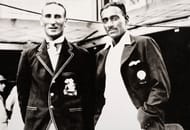Fender was right. After his record-breaking 1930 Ashes, England needed fresh ideas and outlandish tactics to rein in Bradman’s almost supernatural skills. They needed a plan and a man who would not only stand up to the Aussie genius but also would end his tyrannical master-class.

Enter Douglas Jardine. England appointed Jardine for the job of bringing back the Ashes and in the quest for the sacred urn, Jardine envisaged an idea – an idea so strong that it shook the foundations of the game.
To appreciate Douglas Jardine, one has to travel back in time to understand the times he grew up in. Born in Bombay, Douglas Jardine was the part of the British Raj. He grew up in a world that saw British dominance around the world and was tutored in the quintessential British qualities of bull-headed determination, cold-hearted resolve, and patrician disdain. Being brought up in the Raj-era, he also had an ingrained hatred towards the Australians, whom he often referred to as “Barbarians”.
Jardine was sent to Winchester at the tender age of nine. Separated from his parents, Jardine struggled to fend off bullies in school. Though he had the talent, he couldn’t unleash his full potential until he met Rockley Wilson. Wilson became his mentor and passed on the most important advice of his life –
“You don’t bowl a batsman out…you plan him out!”
Under Wilson’s tutelage, Jardine flourished as a batsman and a shrewd tactician. He scored heavily for Winchester and was touted as one of the finest openers after Herbert Sutcliffe. However, Jardine’s life changed when he met Percy Fender, the then captain of Surrey, during a game between Winchester and Eaton.
During this game, Jardine sidestepped the spirit of cricket for the first time. He asked one of his bowlers to “Mankad” Eaton’s best batsman without giving him a prior warning. Winchester won the game, but Jardine faced criticism from the authorities and his fellow mates.
Percy Fender, though, found nothing wrong with his methods. Fender, one of the best captains who never led England, was known for his out-of-the-box ideas and was always at war with the MCC Lords for his notorious knack of bending the rules. He congratulated Jardine for his move and took him under his wings at Surrey.
Thus began Jardine’s foray into leadership. After replacing Fender as the Surrey captain, Jardine took over “Mission Australia” in 1932. He believed that to beat Australia, England had to beat Bradman first. So Jardine’s main focus was to recognize that one elusive weakness of Don Bradman. He went through his batting reels, talked to bowlers and spent sleepless nights going through his records.
However, it was Harold Larwood, who accidentally handed Jardine the breakthrough while revisiting Bradman’s double hundred at the Oval.
“I’ve got him…he’s yellow” – That was it! Jardine came up with his famous “leg-theory” while watching Bradman’s reel at Percy Fender’s house. On a lively Oval track, when Larwood bowled short at his body, Bradman flinched and didn’t look at ease.
Jardine decided to implement the “leg –theory” to stop Don Bradman. He had the plan but needed a lethal weapon who would execute it with aplomb. He didn’t just need a bowler; he needed a bowler seeking revenge. He needed Harold Larwood. Jardine selected a five-man pace battery, spearheaded by the dangerous Harold Larwood, to neutralize Don Bradman and bring the Ashes back to the English shores.
Follow IPL Auction 2025 Live Updates, News & Biddings at Sportskeeda. Get the fastest updates on Mega-Auction and cricket news
